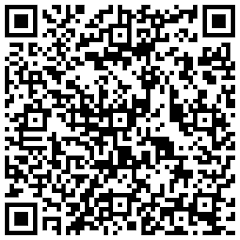Below is the code illustarating how to get the remote party's telephone number. It is different for S60 3rd Edition and previous versions.
In V8 and Below
#include
void GetRemotePartyPhoneNumberL(TDes& aPhoneNumber)
{
RTelServer etel;
// Connect to ETel server
User::LeaveIfError(etel.Connect());
CleanupClosePushL(etel);
// Load phone module. This is just to be on the safe side
// because it should have been loaded already
_LIT(KTsyName, "phonetsy.tsy");
User::LeaveIfError(etel.LoadPhoneModule(KTsyName));
RTelServer::TPhoneInfo phoneInfo;
// Get phone info. We need phone's name to open a phone
const TInt KPhoneIndex = 0;
User::LeaveIfError(etel.GetPhoneInfo(KPhoneIndex, phoneInfo));
RPhone phone;
// Open the phone
User::LeaveIfError(phone.Open(etel, phoneInfo.iName));
CleanupClosePushL(phone);
RPhone::TLineInfo lineInfo;
// Get line info. We need line's name to open it
const TInt KLineIndex = 0;
User::LeaveIfError(phone.GetLineInfo(KLineIndex, lineInfo));
RLine line;
// Open the line
User::LeaveIfError(line.Open(phone, lineInfo.iName));
CleanupClosePushL(line);
RLine::TCallInfo callInfo;
// Get call info. We need call's name to open it and get the info we need
const TInt KCallIndex = 0;
User::LeaveIfError(line.GetCallInfo(KCallIndex, callInfo));
RMobileCall call;
// Open the call
User::LeaveIfError(call.OpenExistingCall(line, callInfo.iCallName));
CleanupClosePushL(call);
RMobileCall::TMobileCallInfoV1 mobCallInfo;
RMobileCall::TMobileCallInfoV1Pckg mobCallInfoPckg(mobCallInfo);
// Get the call's info
User::LeaveIfError(call.GetMobileCallInfo(mobCallInfoPckg));
// We successfully got the call's info.
// Now copy the remote party's phone number to the target descriptor
aPhoneNumber.Copy(mobCallInfoPckg().iRemoteParty.iRemoteNumber.iTelNumber);
// Close all handles
CleanupStack::PopAndDestroy(4); // call, line, phone, etel
}
In V9 and above
void GetRemotePartyPhoneNumberL(TDes& aPhoneNumber)
{
// Create a CTelephony object
CTelephony* telephony = CTelephony::NewLC();
CTelephony::TCallInfoV1 callInfoV1;
CTelephony::TCallInfoV1Pckg callInfoV1Pckg(callInfoV1);
CTelephony::TCallSelectionV1 callSelectionV1;
CTelephony::TCallSelectionV1Pckg callSelectionV1Pckg(callSelectionV1);
CTelephony::TRemotePartyInfoV1 remotePartyInfoV1;
CTelephony::TRemotePartyInfoV1Pckg remotePartyInfoV1Pckg(remotePartyInfoV1);
callSelectionV1.iLine = CTelephony::EVoiceLine;
callSelectionV1.iSelect = CTelephony::EInProgressCall;
// Get the call info
User::LeaveIfError(telephony->GetCallInfo(callSelectionV1Pckg,
callInfoV1Pckg, remotePartyInfoV1Pckg));
// Copy the remote party's phone number to the target descriptor
aPhoneNumber.Copy(remotePartyInfoV1Pckg().iRemoteNumber.iTelNumber);
CleanupStack::PopAndDestroy(); // telephony
}

![Forum Nokia Champion [2007-2008][2008-2009][2009-2010]](https://champion.forum.nokia.com/static/pics/logo_fn_champion.gif)
